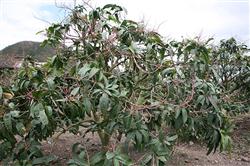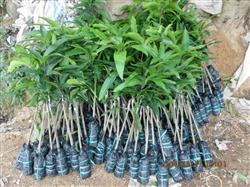Irrigation and fertilization techniques of mango trees

The irrigation of mango fruit trees mainly has two periods: the first period is after fruit harvest and pruning, when it is in a period of drought, irrigation should be combined with post-fruit fertilizer to promote the extraction of autumn shoots and cultivate healthy fruit mother branches in the coming year. The second period is the fruit development period, in which fruit development, cell division and fruit expansion need a lot of water. At this time, irrigation can fully meet the needs of fruit growth and development and increase yield. Water should be irrigated 2-3 times a month according to weather conditions. The key points of fertilization for fruit trees are as follows: one is to apply post-fruit fertilizer (June-early July): post-fruit fertilizer is the focus of fertilization throughout the year, accounting for 70-80% of the total amount of fertilizer applied throughout the year. The main purpose is to promote autumn shoots and restore growth, so as to lay a good foundation for next year's results. Mainly available nitrogen fertilizer and organic fertilizer, 30-50 kg organic fertilizer per plant, 1-1.5 kg urea and 0.5 kg compound fertilizer were applied after fruit picking and pruning. The second is to apply flower-promoting fertilizer (September-October): the normal flower bud differentiation of mango is usually from November to December, and the flower bud differentiation promoted by chemicals can be earlier than October. Therefore, the flower-promoting fertilizer should be applied before the end of the rainy season, mainly potash fertilizer, 1-1.5 kg potassium nitrate per plant. Third, thanks to flower fertilizer: mango flowering will cause a lot of nutrient consumption, should be applied in the flower, urea or potassium nitrate 0.5-1 kg per plant, urea or potassium nitrate mixed with water into 0.5-1% fertilizer spray leaves, extra-root topdressing, supplement nutrients. The fourth is to apply strong fruit fertilizer: when the mango blossoms about 30 days, the young fruit grows rapidly, in order to reduce fruit drop, each plant is applied 0.5-1 kg urea and potassium nitrate, or other foliar fertilizer.
- Prev

Cultivation and management techniques of mango trees
First, orchard construction and planting 1. According to the topographic trend of the orchard, the orchard should set up a good bed to prevent rain, water and soil erosion. Dredging drainage channels, the whole garden border ditch and Huanyuan ditch must be unblocked. To achieve self-drainage of rain, no waterlogging after rain, to achieve the purpose of artificial water control; at the same time, people in the garden.
- Next

Cultivation techniques of Ganoderma lucidum with mango sawdust
1. Scion selection: the scion is collected from the improved variety mother garden or adult mother tree. The mother plant requires pure variety, high yield, stable yield, high quality and no quarantine diseases and insect pests. All nurseries with suitable conditions should have ear picking nurseries, which are specially used for ear picking and ear grafting. Select branches for the crown periphery to the sun, strong growth, full buds, disease-free.
Related
- Moge, come on! The staff of the peasant association in the producing area of cantaloupe were frightened when the crowd gathered.
- Causes and Solutions of low Fruit setting rate of Apple
- Symptoms and control measures of passion fruit virus disease
- Fruit growing lesson: how do apple orchards keep high yields?
- Can you build orchards in the mountains? What are the pros and cons?
- How to manage the coloring period of Crisson grape?
- This paper introduces the processing technology of two kinds of fig products.
- How much is a month for retired teachers in rural areas by 2020?
- How can strawberry planting increase sugar content? We should pay attention to management in many aspects.
- What are the cultivation techniques on how to improve the yield of golden fruit?

